 We did it! Apparently. Whatever “it” is.
We did it! Apparently. Whatever “it” is.
Wednesday’s “SOPA Strike” finally got the attention of Congress (and millions of confused high school and college slackers who had to endure 24 hours without access to Wikipedia, humanity’s only known source of information). In the wake of the protests, sponsors of both the House and Senate bills “shelved” the bills.
For now, they’re gone. But do you remember the end of Halloween, when Loomis shoots Michael and he falls out the window, and then when they look down a second time, he’s gone? Yeah, that.*
Before I move on to other topics (hopefully forever), I just wanted to share some final thoughts about SOPA/PIPA.
1. They’re not really dead. Sure, it’s entirely possible that we’ll never hear about SOPA/PIPA — by those names — again. But if you think the MPAA, RIAA, and their legions of highly paid lobbyists are going to let it all go this easily, you must be new here. As long as there’s any chance that anything the entertainment industry owns is being copied illegally, which is to say, until copyright law is forgotten during the zombie apocalypse (which might just be led by Zombie SOPA itself), old media dinosaurs will continue to fight for their lives.
Actually dinosaurs employing an army of zombies to fight Internet cyborg pirates sounds like a perfect Hollywood movie idea. (Copyright 2012 Scott Anderson. All rights reserved.)
2. Piracy is not really the problem. Sure, piracy happens. Sure, it’s illegal, and very probably even “wrong.” But what’s really wrong (as in, factually incorrect) is the idea that piracy translates directly into lost income for movie studios and record labels, or, as they (and their cronies in Congress) like to put it, lost jobs for gaffers and key grips and best boys and Foley artists and all of those other weirdly named jobs you see scrolling by in extremely small type at the very end of the ending credits of big Hollywood movies.
Yes, if Hollywood goes down, it’s going to take those kinds of middle class jobs down with it. But trotting these people out to get the average person to support this legislation is not unlike Prolife Across America’s billboards with pictures of babies and speech bubbles saying “I could wiggle my toes at 18 weeks!” Bear with me. Regardless of whether they’re right or wrong on the issue, both tactics are designed to appeal on a very simple, gut emotional level, and to discourage critical thought about what’s really going on, whose agenda is really being promoted, and what the implications of that agenda are.
Aside from the documented cases of entertainment industry lobbyists making egregious “errors” in their calculations of the numbers of jobs affected or the billions of dollars “lost” each year to piracy, there’s the simple logical fallacy that every pirated movie or CD equates to a lost sale. On reflection, this should be obvious: many, if not most, of the people who are pirating a movie or an album were not likely to buy it otherwise.
Then again, sometimes getting a copy of an album from a friend turns a person into a lifelong fan of a musician. A personal example: in my life I have purchased every album ever released by both Rush and Yes, which is a lot (there are 31 Rush albums and 29 Yes albums in my iTunes library right now), several of them multiple times, as each new remastered version is released. I have seen these two bands in concert a combined 8 times. I’ve bought their concert videos on VHS and DVD. In all I’ve probably spent over $2000 in the past 20 years on my Rush and Yes obsessions. And it all began because a friend made me cassette copies of A Show of Hands and Classic Yes (both of which I subsequently purchased on CD) back in high school.
So, you see, piracy is not really the problem in two ways: 1) an instance of piracy doesn’t necessarily mean a lost sale up front, and 2) copying now may lead to a lot of purchasing later.
3. Copyright is broken anyway. The other day I mentioned that copyright law had been changed to allow Disney to retain exclusive rights to Mickey Mouse. In fact, the Copyright Term Extension Act of 1998 was even referred to as the Mickey Mouse Protection Act! I’m not against copyright, per se. I believe that the creators of original works should reserve the right to decide how their works are used and distributed, and to profit from their efforts.
But I also believe that an ever-changing law that allows that protection to extend in perpetuity, long after the creator’s death, is counterproductive and harmful to the free exchange of ideas within a society. I’m firmly against software patents for the same reason. In fact, I’m even more against software patents than I am against indefinite copyright extension, but that’s a topic for another post. But I think it’s worth mentioning that I am equally, or even more so, opposed to protectionism in my own field than I am in the entertainment industry.
4. Adapt or die. That’s it, really. As I’ve noted previously, these bills (and any future legislation like them) are not really designed to protect the interests of content creators. They are intended to prop up a dying industry that grew fat on profits over a period (specifically the 1970s through the 1990s) when their business was built upon a model that is ultimately unsustainable, especially as new means of distribution have proliferated. Combine that with what is broadly regarded as a precipitous decline in the quality of their products, along with untenable pricing, and you have a perfect recipe for the kind of collapse and failure currently underway. Don’t blame piracy; blame yourselves for overcharging for a product of low value.
P.S. Boy, it feels good to be able to link to Wikipedia again!
* You seriously haven’t seen it, and I spoiled the ending for you? Whatever. Also, would describing a portion of a film in a blog post like this have been a prosecutable offense under SOPA/PIPA?

